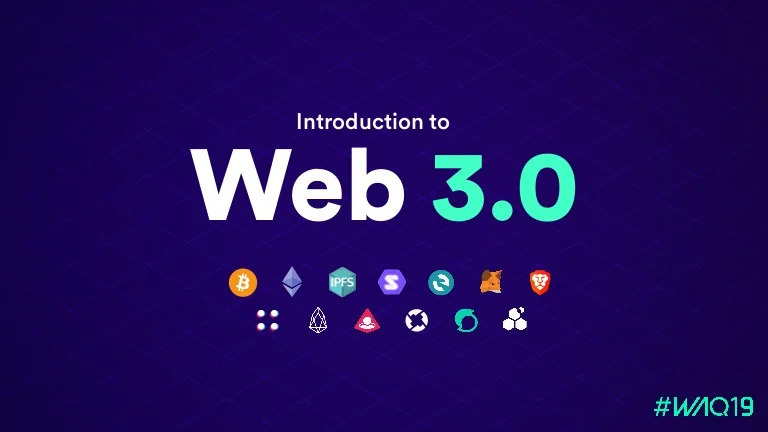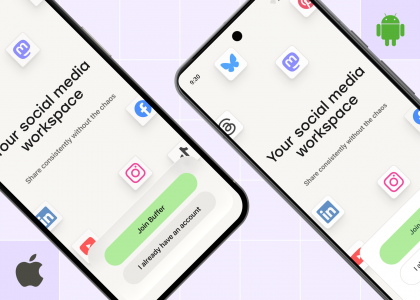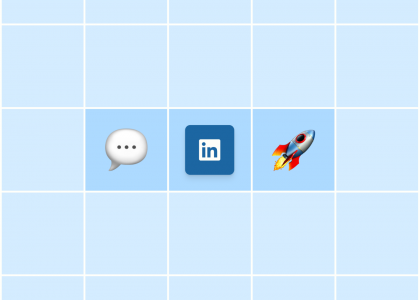30-second summary:
- Having a web3 strategy is non-negotiable. However, keep in mind the Web3 is not the metaverse
- Develop a plan as if expanding into a fresh territory. Alan Kittle, Executive Creative Director at Summer Friday, provides three ways to plan for Web3
- Activate only what’s authentic for your brand and keep in mind consumer perception is the only reality
 Developing a web3 strategy for your brand is necessary because it’s simply the evolution of your approach to digital. Marc Andreessen of a16z recently called the movement the “second half of the internet” while also acknowledging the visceral “fear and loathing” of many critics. And much like the early days of the internet, it’s a tough sell right now. And no, fear not, I am NOT going to refer to the metaverse at any point in this piece. Web3 exists now, while the metaverse is still a work in progress.
Developing a web3 strategy for your brand is necessary because it’s simply the evolution of your approach to digital. Marc Andreessen of a16z recently called the movement the “second half of the internet” while also acknowledging the visceral “fear and loathing” of many critics. And much like the early days of the internet, it’s a tough sell right now. And no, fear not, I am NOT going to refer to the metaverse at any point in this piece. Web3 exists now, while the metaverse is still a work in progress.
Blockchain-based technologies and user experiences are very much in their infancy, while consumers and brands are still mostly searching for a compelling ‘why’ … but, as with the internet itself, history prepares us for the revelation that web3 is unavoidable for marketers.
When I took my first steps into web3 it felt entirely other-worldly. New language, new systems, and a new culture. My experiences while traveling have inspired this metaphor for me.
As marketers consider their approach (with all the ‘unknown unknowns; that come with building the first version of a new strategy) I’ve thought about one mindset that’s familiar ground for any established brand. Think of how your brand enters a new region—and follow the same model.
By doing so you’ll consider a variety of factors that boil down to one question for your team. Is your brand elastic enough to expand its presence successfully with new societal and cultural norms; with novel ways of doing business; or with a new language?
How successfully can you ‘transcreate’ your content and which consumers will be most receptive? Will your brand proposition feel valuable when consumers who now covet ownership more than anything else expect a new type of value creation?
Let’s break this down into just three ways to build your plan:
1. Entering brave new Web3 worlds
My favorite definition of ‘brand elasticity’ calls it “… a measure of the ability of the individual brand to establish itself in new areas.” And goes on to outline, “To achieve this, the brand has to be able to exploit its values and reputation so as to create market confidence …”
Marketers quietly building plans can take great heart from the positivity that’s generated when established brands announce their web3 intentions. And there are opportunities abound to create new experiences for existing customers and find new customers for your existing products.
What are just some of the conversations brand teams have, when they’re tasked with entering a new region? Do we have a sound reason to expand? What are our target customers’ expectations, and can we exceed them? What is our ‘digital first’ model for new markets? What channels are authentic to this new culture? How do we ‘localize’ our content to pull new consumers into our brand narrative? And more besides.
 For ‘love brand’ Lamborghini, one of these questions led to their partnership with Swiss artist Fabian Oefner because they used insight into how NFT culture uses memes. What might have been ‘cringe’ turned out to be awe-inspiring thanks to the Space Time Memory art itself. NFT is very art-first from my experiences so far. And so, the automakers opted to craft a physical and digital art project that turned heads and made them the center of conversation.
For ‘love brand’ Lamborghini, one of these questions led to their partnership with Swiss artist Fabian Oefner because they used insight into how NFT culture uses memes. What might have been ‘cringe’ turned out to be awe-inspiring thanks to the Space Time Memory art itself. NFT is very art-first from my experiences so far. And so, the automakers opted to craft a physical and digital art project that turned heads and made them the center of conversation.
The ‘new region’ mindset works for web3 as much as it would for Wakanda — yes, I know it’s fictional but bear in mind that Okoye wanted a Starbucks!
2. To build, buy, or partner. That is the question
William Shakespeare puns aside, I’m a major proponent of experimentation (with the proviso a learning agenda exists) and one discussion must be what’s the best way to determine your web3 community proposition before committing to a long-term strategy.
So, of course, brands should evaluate which blend of approaches to build, buy and partner they should commit to. In this case of course, it’s likely web3 teams are not well-established brands. Though it’s worth noting here that there’s a palpable increase in senior leaders from the entertainment and technology industries entering web3, so there are very often experienced and talented professionals within web3 teams.
Building
Using a company’s talent and resources to expand your in-house capabilities of course depends on the type of teams you have within your brand. Smart contract developers are the apex talent required to build the blockchain and dApp experience layer for your project.
In May 2022, Starbucks announced their plans to create NFT collections as an extension of Rewards. In their own words:
“The NFT component plays a role in the coffeehouse chain’s new branding as a “third place,” which Starbucks describes as a “warm and welcome place” that’s neither home or work, where people can “connect and build community.””
 There’s no news yet on what the collections will be … art, music, access to events or VIP spaces maybe … but NFTs are being seen by some (including myself) as a clear use case for evolving CRM with next-level perks and rewards for fans.
There’s no news yet on what the collections will be … art, music, access to events or VIP spaces maybe … but NFTs are being seen by some (including myself) as a clear use case for evolving CRM with next-level perks and rewards for fans.
Buying
Acquire or merge with a business that complements your company and expands your reach. In this case, a brand could buy a ‘collection’ or project outright or invest in it. This way you have a ready-built fanbase to build from … be aware that like any brand M&A, some customers won’t welcome the change.
In the case of NFT projects though, those customers are invariably also investors, so ‘managing imaginations’ becomes a major priority if you don’t want the reputation (and floor value) of your investment to disappear very quickly.
 One of the most high-profile acquisitions to date was Nike buying RTFKT in December of 2021. Since then, they’ve gifted (airdropped) to holders their MNLTH boxes which contained virtual, customizable “CryptoKicks” and other rewards. Their move towards ‘phygital’ continues with an AR Genesis Hoodie that recipients can convert into physical apparel which will feature NFC technology to interact with holders NFT. All extremely innovative with competitors ready to emulate this move.
One of the most high-profile acquisitions to date was Nike buying RTFKT in December of 2021. Since then, they’ve gifted (airdropped) to holders their MNLTH boxes which contained virtual, customizable “CryptoKicks” and other rewards. Their move towards ‘phygital’ continues with an AR Genesis Hoodie that recipients can convert into physical apparel which will feature NFC technology to interact with holders NFT. All extremely innovative with competitors ready to emulate this move.
Partnering
Join forces with another company that has expertise that will help you reach your goal. This is easily the most straightforward way to experiment in this ‘new region.’ We tend to call them ‘collabs’ in web3, but you get the gist! The value exchange for all parties involved is much easier to sell in, once you have a good fit for your brand.
Fandoms get ‘hyped’ for valuable perks or new ‘utility’; project teams earn credibility by association with their new partner; and brands have a safe space to learn what works and doesn’t work. Without doubt, the appeal of connectedness between NFT, brand partners, and (potential or existing) token holders are a significant reason to get involved.
World of Women—a “community celebrating representation, inclusivity, and equal opportunities for all” – have already announced a series of collaborations and deals with celebrities, media companies, Shopify and The Sandbox, but my personal favorite is their upcoming exclusive version of Monopoly with Hasbro. World of women will first distribute the game to holders who can redeem it for a physical edition of the legendary board game. They announced this activation during NFT.NYC, a big week for the project, which culminated in an exclusive Madonna concert.
3. Consumer perception is your only Web3 reality
Hands up, I said I wouldn’t talk about the metaverse … but allow me one time to say that despite augmented, virtual, and mixed reality concepts often featuring in creative presentations or award shows … the ONLY reality that matters to you in web3 is how consumers perceive your brand’s entry into the space.
And this is where brand elasticity comes in. Some academics believe “that consumers are more accepting of extensions into distant product categories for luxury brands (Rolex) than for everyday brands (Timex).” Their research considered analytical and emotional perception of brands extending their reach and found that analytical thinkers had a tougher time justifying (to themselves) why an everyday brand would want to ‘get out their lane.’
 However, both types of thinkers gave luxury brands more leeway. So, through this lens at least, consider how your customers perceive your brand in its current category. This might go some way to explaining why fashion houses such as Gucci and Balenciaga have received worthy attention with their virtual apparel and accessories NFT launches. Or why yet more auto brands like Mercedes have tied NFT Art Collections to their models. These marketers already place their brand on a LOT of products, why would a digital product be any different?
However, both types of thinkers gave luxury brands more leeway. So, through this lens at least, consider how your customers perceive your brand in its current category. This might go some way to explaining why fashion houses such as Gucci and Balenciaga have received worthy attention with their virtual apparel and accessories NFT launches. Or why yet more auto brands like Mercedes have tied NFT Art Collections to their models. These marketers already place their brand on a LOT of products, why would a digital product be any different?
Everyday brands should not lose hope, though. The same research offered hope in at least one interesting way … ” (Consumers) welcome extensions that can be used with other products sold by the parent brand.” That opens possibilities for ecosystem brands like Samsung; marketplaces such as Amazon; or aggregators such as Expedia. Like joining a club, membership has its benefits.
Another example is when the consumers of a product or service perceive it as superior at what it does, and the brand can transfer the functional benefit into the digital space. With ‘utility’ being a major talking point in most NFT projects, this offers promise for marketers.
Shopify is an excellent example of this … it’s tough for consumers to get ‘all the feels’ for a B2B ecommerce brand. But they’re stretching into web3 by offering an NFT-gated exclusive storefronts. They’re also allowing customers to sell NFTs on their cross-chain platform, thereby creating and satisfying demand on both sides of the equation!
Web3: Looking ahead
The rapid pace of innovation within web3 can be daunting for those of us who’ve entered the space, never mind marketers looking to join the fray. I predict the next few months will see the much-needed entry of more brands through experiments and partnerships.
Evolutionary steps in CRM, ecommerce, loyalty, and activation will be taken by web3 native projects and established brands alike. Beyond that, the “second half of the internet” remains unwritten, just like the smart contracts that will indelibly change how we connect with customers.
Alan Kittle is Executive Creative Director with Summer Friday. Alan has led creative departments for over 15 years, advocating for bold conceptual thinking and executional excellence. He’s worked in the US and UK for networked and independent groups and has amassed over 50 awards from international shows. His health and non-profit experience includes work for clients including Google, Samsung, Bank of America, and NHS.
Subscribe to the ClickZ newsletter for insights on the evolving marketing landscape, performance marketing, customer experience, thought leadership, videos, podcasts, and more.
Join the conversation with us on LinkedIn and Twitter.
The post Is your brand elastic enough for Web3? appeared first on ClickZ.






